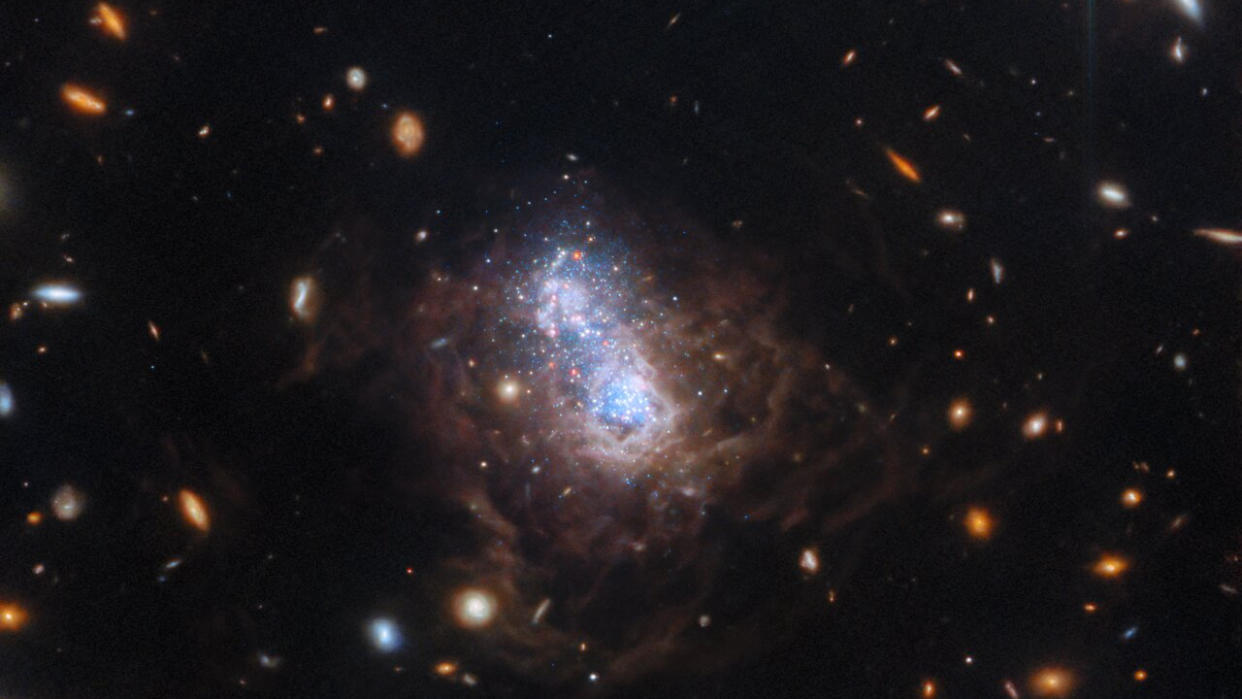Gorgeous James Webb Space Telescope image captures sparkling stars, old and new

A small galaxy bursts with star formation in a dazzling new image from the James Webb Space Telescope.
The galaxy, called I Zwicky 18 (I Zw 18), is located roughly 59 million light-years from Earth. It is classified as a dwarf irregular galaxy, meaning it's much smaller and less structured than our Milky Way galaxy.
The James Webb Space Telescope's Observations of I Zw 18 suggest the galaxy has gone through several sudden bursts of star formation, creating two distinctly bright regions of white and blue stars at its core.
Related: Marvel at the James Webb Space Telescope's largest image of the cosmos yet
Wispy brown filaments surround the central starburst region in the new JWST photo. These filaments represent bubbles of gas that have been heated by stellar winds and intense ultraviolet radiation unleashed by hot, young stars, according to a statement from the European Space Agency.
Previous Hubble Space Telescope observations of I Zw 18 revealed fainter, older red stars within the galaxy, suggesting its star formation started at least one billion years ago — possibly as much as 10 billion years ago. While the JWST's observations previously capture dusty and evolved stars, the new image also shows signs of more recent star formation, possibly triggered by an interaction with a neighboring companion galaxy — the hazy blue region located just below the dwarf galaxy in the new image.
"Webb's new data suggest that the dominant bursts of star formation in these regions occurred at different times," ESA officials said in the statement. "The strongest starburst activity is now believed to have happened more recently in the northwest lobe as compared to the galaxy's southeast lobe. This is based on the relative populations of younger versus older stars found in each of the lobes."
Related Stories:
— What are the true colors of images from the James Webb Space Telescope?
— Stunning light shows on Uranus and Saturn may soon draw James Webb Space Telescope's eye
— James Webb Space Telescope spots hint of mysterious aurora over 'failed star'
The recent image, which was released on March 26, was taken as part of an initiative to study the life cycle of dust in I Zw 18. Building on the observations taken by Hubble at optical wavelengths, the JWST is able to study the dwarf galaxy in greater detail at infrared wavelengths.
"This galaxy is of particular interest as its content of elements heavier than helium is one of the lowest of all known galaxies in the local universe," ESA officials said in the statement. "Such conditions are thought to be similar to those in some of the first star-forming galaxies at high redshift, so the Webb study of I Zw 18 should shed light on the life-cycle of stars and dust in the early universe."

